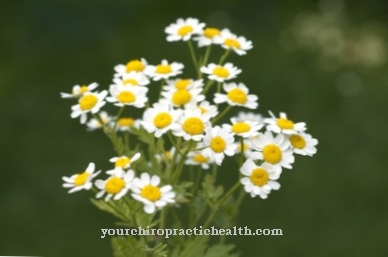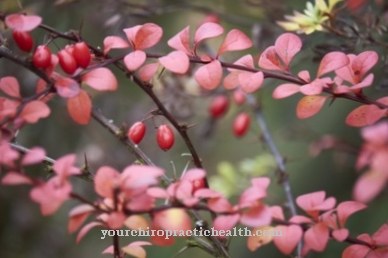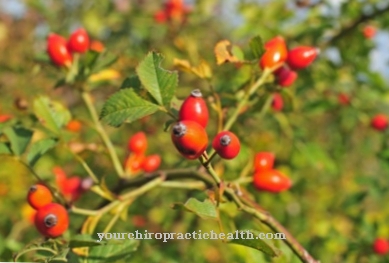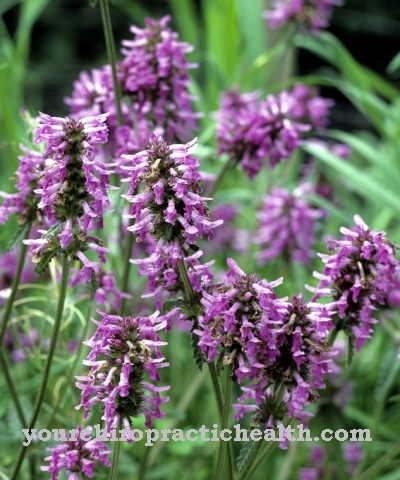cinnamon is one of the oldest and most aromatic spices in the world, at the same time an effective natural remedy that is obtained from the bark of the cinnamon tree. This is dried into cinnamon sticks, which in turn can be ground into fine cinnamon powder.
Occurrence & cultivation of cinnamon

At Cinnamon trees are different species of the plant genus Cinnamomum from the laurel family, which were originally native to Sri Lanka. Today the largest growing areas are in Sri Lanka, China, Indonesia and Sumatra. The tropical tree can grow up to 15 meters high, but in agricultural cultivation it is kept a maximum of three meters lower to make harvesting easier.
There are a hundred different types, but we usually only sell two of them in stores: Ceylon cinnamon and cassia cinnamon. The Ceylon variety is obtained from the real cinnamon tree in Sri Lanka. For them, only the bark of young shoots is used, which is dried into thin rolls and has a fine aroma and light color.
Cassia cinnamon, also known as "China cinnamon", comes from the Chinese cinnamon tree. The inner bark of mature trees is used for this, the first harvest can take place after four years. The resulting rolls are thicker, darker and stronger in taste than Ceylon cinnamon.
Effect & application
The bark of the tree is required to extract the spice. The bark and middle bark are removed and the inner bark is then scraped off with special knives. It rolls up into the characteristic roll shape, in which it is finally dried, whereby six to ten pieces of this inner bark are pushed into one another. Cinnamon powder is obtained by grinding these cinnamon sticks, also known as "Kaneele".
All other parts of the tree are also used, flowers as so-called cinnamon cloves, small branches and leaves for the production of cinnamon oil. The latter can also be obtained from manufacturing waste and chips. Cinnamon was already used in China 3,000 years ago, and when it was first introduced into Europe in the 16th century, the spice was at times more valuable than gold.The Egyptians also used the powder for embalming and for various medical purposes.
In ancient times, blossoms and bark were also very popular as incense. Today, in addition to being used for medicinal purposes, cinnamon is mainly used as a spice to flavor baked goods, hot drinks and spirits. It is typically used for desserts, but its aroma also goes very well with savory dishes, for example in various meat and stews from Indian and Oriental cuisine. Cinnamon also plays an important role in beverages; it is a component of cola and vermouth, among other things.
The flavoring of coffee with cinnamon is very popular, not only because of the taste but also because the addition of the spice reduces the gastrointestinal properties of the coffee. Cinnamon goes particularly well with cardamom, bay leaves, cumin, ginger, allspice, nutmeg, turmeric and vanilla. Cinnamon should be stored tightly closed, dry and dark. Cinnamon sticks can be used for a very long time, their aroma is only slowly lost.
For the health-promoting effects of cinnamon, one gram per day is recommended, which corresponds to about one teaspoon. Because of the intense taste, cinnamon in capsule form is often used for this. Although these are more expensive than spiced cinnamon, in addition to their neutral taste they also have the advantage that their active ingredient content is standardized and no active ingredients are lost.
Importance for health, treatment & prevention
In addition to its use as a spice, cinnamon is also considered an extremely effective natural remedy. It is said to lower blood sugar and cholesterol levels and thus have a beneficial effect on diabetes. There are studies that have shown lowering of fasting blood sugar, triglycerides, total and LDL cholesterol.
In addition, cinnamon is a warming spice, thermogenesis stimulates the metabolism and uses more energy and calories, which can contribute to weight loss. The vessels, which are enlarged due to the warming effect, further reduce blood pressure, stabilize the circulatory system and promote blood circulation. Cinnamon, or rather the smell of cinnamon, also has a positive influence on the cognitive performance of the brain.
Judgment, memory and concentration are increased, and studies have also been published that show that cinnamon prevents Alzheimer's disease by blocking or breaking down deposits in the brain. For external use, cinnamon is used in the form of compresses to treat rheumatism, low back pain and cold feet. Cinnamon tea, for which a cinnamon stick simmered in boiling water, is recommended to stimulate the circulation.
Cinnamon milk, cinnamon powder warmed in milk, works against colds, as does cinnamon oil, which is also pain reliever and is also used for acute toothache. During pregnancy, however, cinnamon oil should be used cautiously, as it can promote labor, which in turn can also be used to stimulate labor. The aroma of the cinnamon oil consists of 75 percent cinnamaldehyde, which has been proven to have an antimicrobial effect, making it antibacterial and fungicidal.
Other flavoring substances are eugenol and coumarin, the proportion of coumarin in cassia cinnamon being higher than in Ceylon cinnamon. In too high a concentration, coumarin can lead to headaches and nausea, and in extreme overdosing even to liver and kidney damage, which is why excessive cinnamon consumption was not recommended in the past.
However, if the recommended daily dose is adhered to, there is no risk, normal consumption is absolutely harmless. In further studies, it was even possible to prove that cinnamon extract has a cancer-preventive effect, for example against cervical cancer and prostate cancer, and lung metastases could also be reduced by a daily dose of 40 milligrams.




























